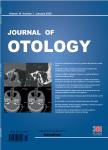ANIMAL BEHAVIORAL MODELS OF TINNITUS
ANIMAL BEHAVIORAL MODELS OF TINNITUS作者机构:Department of OtolaryngologyChinese PLA General Hospital Center for Hearing & DeafnessDepartment of Communicative Dis-orders and SciencesState University of New York at Buffalo 3435 Main StreetBuffaloNY 14214
出 版 物:《Journal of Otology》 (中华耳科学杂志(英文版))
年 卷 期:2014年第9卷第2期
页 面:58-63页
学科分类:1003[医学-口腔医学] 1002[医学-临床医学] 100213[医学-耳鼻咽喉科学] 10[医学]
基 金:supported by the grants of the National Key Basic Research Program of China,No.2014CB943001 the National Natural Science Foundation of China,Major Project,No.81120108009
主 题:Tinnitus Behavioral model Acoustic startle Noise exposure Salicylate
摘 要:The pathophysiology of tinnitus is poorly understood and treatments are often unsuccessful. A number of animal models have been developed in order to gain a better understanding of tinnitus. A great deal has been learned from these models re- garding the electrophysiological and neuroanatomical correlates of tinnitus following exposure to noise or ototoxic drugs. Re- liable behavioral data is important for determining whether such electrophysiological or neuroanatomical changes are indeed related to tinnitus. Of the many documented tinnitus animal behavioral paradigms, the acoustic startle reflex had been pro- posed as a simple method to identify the presence or absence of tinnitus. Several behavioral models based on conditioned re- sponse suppression paradigms have also been developed. In addition to determining the presence or absence of tinnitus, some of the behavioral paradigms have provided signs of the onset, frequency, and intensity of tinnitus in animals. Although none of these behavioral models have been proved to be a perfect model, these studies provide useful information on understanding the neural mechanisms underlying tinnitus.



